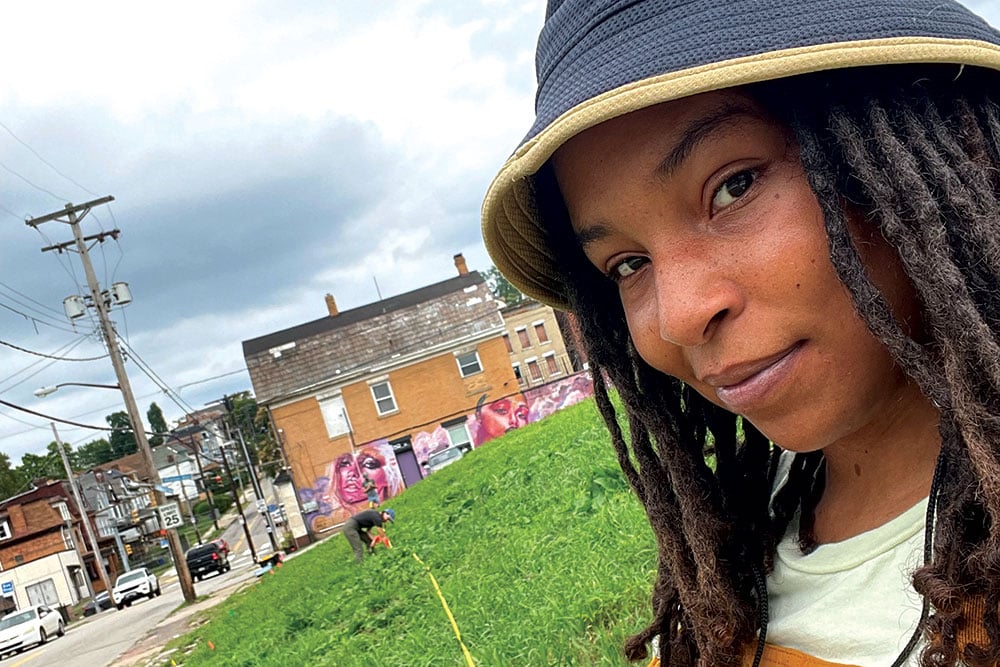Profile: The Neighborhood Painter, Ron Donoughe
Donoughe has captured Pittsburgh’s 90 neighborhoods, its alleyways and its industry during his nearly 40-year career.
As a painter of Pittsburgh, Ron Donoughe is in a hurry.
Painting is not often thought of as a rushed art form, but Donoughe, 65, knows Pittsburgh, and he knows how much it’s in flux.
“I feel compelled to get as much down as I can in my lifetime,” he says. “I love Pittsburgh, but I do worry that it’s losing its grit. That is something that I’m still trying to document before it changes, before it gets too pretty.”
Donoughe has captured the region in six books and numerous exhibitions and as an artist/scholar-in-residence at Fallingwater. His latest series and book, “Ways of Pittsburgh,” captures “our skinny streets,” the alleyways where people often do most of their living, he says.
“I’ve met a lot of people painting in the ways — and they share their stories. And that’s very fascinating to me, when I meet people while I’m out painting. It’s usually meeting by happenstance of me being there. But in some ways, I think it contributes to what I do as an outdoor painter.
“I’m also very curious about how light changes over distance, and so alleyways, a lot of them, are very linear — and so that plays out in artistic fashion.”
Related: Profile: Pittsburgh’s Beekeeping Ballerina
On a partly sunny February day, Donoughe was painting in an alleyway behind his daughter’s Lawrenceville house. He made a small oil sketch, took a reference photo, and made plans to go back the following day to work on a larger version of the scene.
While he was there, he ran into an old friend, someone he knew from living and working in the neighborhood for 30 years. They ended up talking for an hour.
“It was really, really delightful, because in this neighborhood, I’ve been here for so long, I do see people when I’m out painting that [I] know.”
They talked about the way Lawrenceville, where Donoughe raised his two children and where his studio is located, has changed over the past few decades, with new businesses and a younger population.
“We both agreed that everything’s always in a state of flux, so there’s no way to really dictate how things evolve, so you have to kind of roll with it,” Donoughe says.
Donoughe was born and raised in Loretto, Cambria County; he and his twin brother, Don, were the next-to-youngest in a family of eight children. Don moved to California to pursue painting while Ron stayed in Pittsburgh to be a graphic designer.
“We ended up switching roles,” says Ron, who has a degree in art education from Indiana University of Pennsylvania (as does Don); his brother went into the tech industry as a multimedia designer.
In 2002, Barbara Jones was the first to select his work for a show at The Westmoreland Museum of American Art, where she was the curator for decades. She remembers he sold 29 out of 50 small pieces he displayed at the show.
“I always was attracted to his work, the sort of spontaneity of it,” she says. “He does really capture the place (Pittsburgh), and I think he’s gone out of his way to find unique places and unique stories to tell.”
In 2018, the City of Pittsburgh named Aug. 1 Ron Donoughe Day after he finished his 90 Neighborhoods project, which is now on permanent display in the Heinz History Center. In 2020, Donoughe was selected to be an artist/scholar-in-residence at Fallingwater, where he teaches workshops and paints en plein air at one of the most famous architectural sites in America.
Painting Western Pennsylvania doesn’t get old, he says.
“Pittsburgh is a painter’s paradise, and I mean that from so many different ways, but especially the geography and the topography, where you have these vistas from everywhere you go … A lot of times, I’ll go to Polish Hill or Spring Hill even towards Stanton Heights and get these really interesting views of the layering that happens with the houses with Pittsburgh in the background.
“And what you realize is the color of the city changes constantly, every day, every hour, every season it’s a different city visually. That’s why I think this is such an interesting place.”














